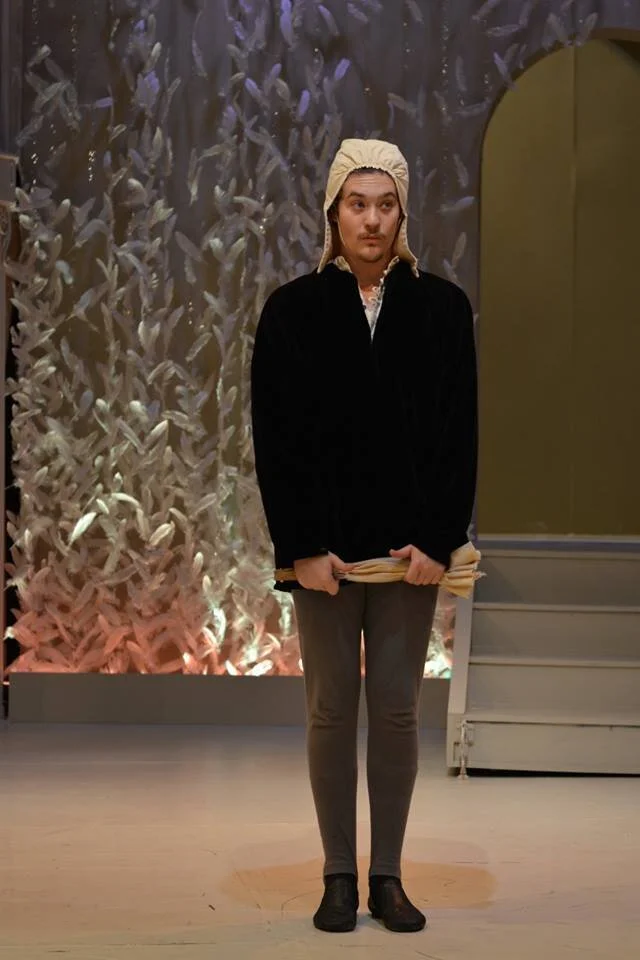William Shakespeare’s
Romeo and Juliet
CREATIVE TEAM:
directed by Laura Rikard
set design by Kristen Sabo
costume design by Michiko Kitayama
choreography by Andrew Gryniewicz
lighting design by Angelina Esposito
vocal direction by Jennifer Burke
fight direction by Kelly Mann
dramaturgy by Darren Blaney
DRAMATURGY PRESENTATION
TALKBACK PHOTOS
Romeo and Juliet Gender & Sexuality Studies talkback with Laura Rikard (Director), Dr. Darren Blaney (Dramaturg), and Anthony Sis (LGBTQ Resources Center director)
Romeo and Juliet Gender & Sexuality Studies talkback with Laura Rikard (Director), Dr. Darren Blaney (Dramaturg), Anthony Sis (LGBTQ Resources Center director), & cast
Romeo and Juliet Gender & Sexuality Studies talkback with Laura Rikard (Director), Dr. Darren Blaney (Dramaturg), Anthony Sis (LGBTQ Resources Center director), & cast
Romeo and Juliet Gender & Sexuality Studies talkback with Laura Rikard (Director), Dr. Darren Blaney (Dramaturg), and Anthony Sis (LGBTQ Resources Center director)
Dramaturgical Program Notes for Romeo and Juliet
Since the 19th Century, critics have discussed Renaissance art in terms of the way it synthesized the predominating medieval worldview with that of the recently rediscovered texts of Ancient Greece and Rome. Shakespeare composed the tragedy Romeo and Juliet in tandem with his comedy A Midsummer Night’s Dream, both of which incorporate elements of the legend of Pyramus and Thisbe, the “star-crossed lovers” of Ovid’s Metamorphosis. Shakespeare’s literary borrowing of these characters’ fates, as well as his numerous references to nature in Romeo and Juliet, manifest his attempt to merge classical myth, materialist philosophy, and Christian cosmology.
In the opening scenes, Shakespeare introduces his audience to a world in which violence is a priori: the origin of the familial feud between the Montagues and Capulets is never fully explained, and it is into this conflict that the sweetness of the titular characters’ tender love blossoms. Although they feel their love to be as “boundless as the sea” beneath the “all-seeing sun” (to which Juliet is compared by the bard only fifty odd years after Copernicus proposed his heliocentric theory), the conflict that surrounds Romeo and Juliet destroys the tenderness of their love. Although in an Epicurean trope, Friar Laurence advises them to love moderately so that their passion will not engulf them, his failure to relay his ill-conceived plan of Juliet’s “resurrection” to Romeo spurs the lovers’ tragic fate. Ultimately, however, in death, the lovers escape the restraints that imprison them: their family names, their religion, and even their bodies. Paralleling the Christian story of resurrection, with their “love sprung from hate,” and the ultimate sacrifice of their deaths, Romeo and Juliet are not only “cut out in little stars” where it is implied they will twinkle eternally in the heavenly spheres, they also appear to liberate their families, as their fathers pledge a pact of peace in the final scene. In Romeo and Juliet, the final image is one in which both the older and forthcoming generations are redeemed by the sacrifice of the children’s love.
In UM’s current production, director Laura Rikard focuses our attention to these contrasts, as well as asks us to imagine how the story might look when our contemporary understanding of the socially-constructed categories of race and gender are brought to bear on Shakespeare’s vision. By deploying the actors’ bodies to the stage in a way that reformulates space, using anachronistic musical passages to explode our assumption that Shakespeare’s works are primarily “period pieces,” and updating the play through the casting of female actors to play male roles, Rikard inverts and exploits Elizabethan theater practice. We hope that UM’s 2017 production of the bard’s 400-year-old play will continue to cast that-very-Queen-Mab-like spell Mercutio infamously describes: may it startle, seduce, and inspire!
— Darren Blaney, Dramaturg










































































































